Equity and Equality are similar concepts, but two very different things.
Equality is a means of treating everyone equally despite socioeconomic differences while Equity is a means of treating everyone circumstantially in order to provide marginalized or disadvantaged groups with the tools and resources they NEED to succeed.
For comparison, think about socioeconomic issues within your own community. Is there a disadvantaged community that’s often left out of the planning process? Is there a marginalized community that’s left out entirely?
Or, what about language barriers, have these obstacles been addressed? What about mobility issues?
These are the foundational questions of equity — It’s not just understanding that inequality exists, but it’s thinking about inequality from the lens of “what can we do to lift up a particular group.”
And, as a relatively new concept within the broader academic world, it’s quickly gaining steam as the best way to address inequality using a ground-up approach.
So, to add some clarification around the topic, we’ve outlined a few examples and tools below that highlight systemic barriers.
Use them, learn from them, and share them with others.
Equity vs Equality Examples
Explaining the difference between the two concepts can be difficult, but not impossible — and the best way to do that is through examples. So, before we highlight our list of equity tools that can be used in your community, here are a few examples of equity vs equality.
Example 1:
Equality Scenario: A neighborhood association has a community-wide meeting and everyone is invited to attend through English-speaking advertisements. The meeting is held in English even though there’s a large Vietnamese presence in the community.
Equity Scenario: A neighborhood association has a community-wide meeting and everyone is invited to attend; however, extra effort is made to include the Vietnamese community. Additionally, the meeting is held in English but it also includes Vietnamese translators who are present and participating.
Why does this meet the definition of equity? This meets the definition of equity because it’s meeting the community where they are. Instead of the Vietnamese community having to do extra work on their end to attend– like finding their own translators or typing the English-worded advertisements into an online translator — the neighborhood association has done that for them, making their ability to participate just as easy as their English-speaking counterparts. Therefore, the neighborhood association has not only recognized language as a barrier to participation, but they’ve identified ways to overcome that barrier and implemented actions to address it.
Example 2:
Equality Scenario: Downtown Millennialville has sidewalks along every street. Each intersection has a crosswalk with a light-up “walk sign” telling pedestrians when to cross.
Equity Scenario: Downtown Millennialville has sidewalks along every street. Each intersection is wheelchair accessible, has a light-up “walk sign” that also includes voice commands, and every street has a sign that is reachable/accessible and marked with braille.
Why does this meet the definition of equity? This meets the definition of equity because it’s recognizing inequality and doing the necessary things to lift social groups up so that they’re on a level playing field — in this example, everyone is given specialized resources to cross the road despite vision impairments, hearing impairments, or mobility issues.
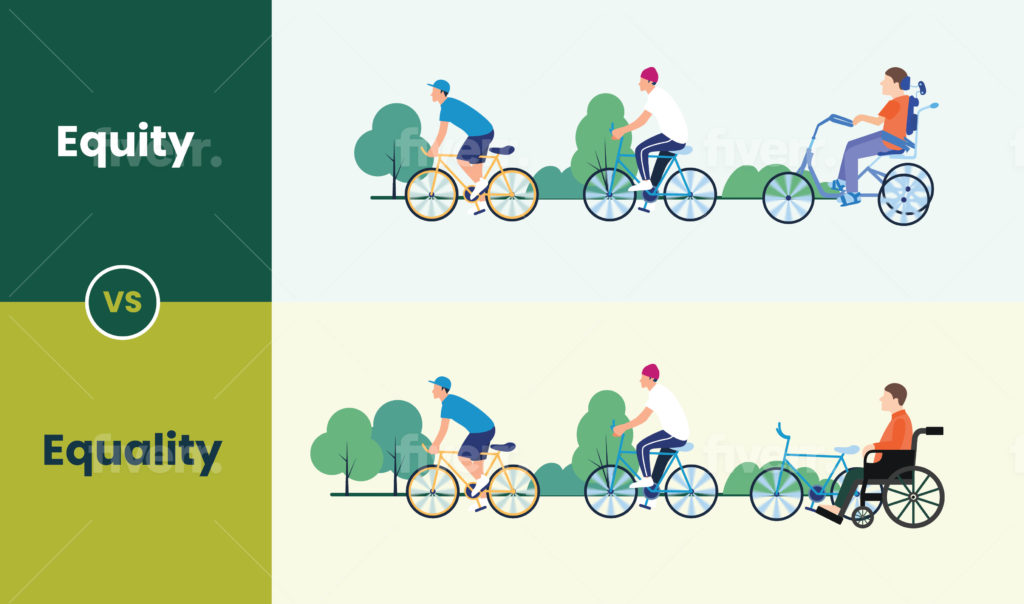
Example 3:
Equality Scenario: The City of Millennialville is awarded a grant to improve stormwater runoff. The grant money is distributed equally and each individual neighborhood in the City receives the exact same amount.
Equity Scenario: The City of Millennialville is awarded a grant to improve stormwater runoff. The grant money is targeted towards low-income and disadvantaged neighborhoods because they are least equipped to handle flooding. They receive $50,000 while the more affluent neighborhoods receive $20,000.
Why does this meet the definition of equity: This meets the definition of equity because money is being allocated to the people that need it the most. If the money was distributed equally, then yes, the poorer neighborhoods would be better protected against stormwater, but their protections would still be subpar when compared to their more affluent counterparts who received the same amount.
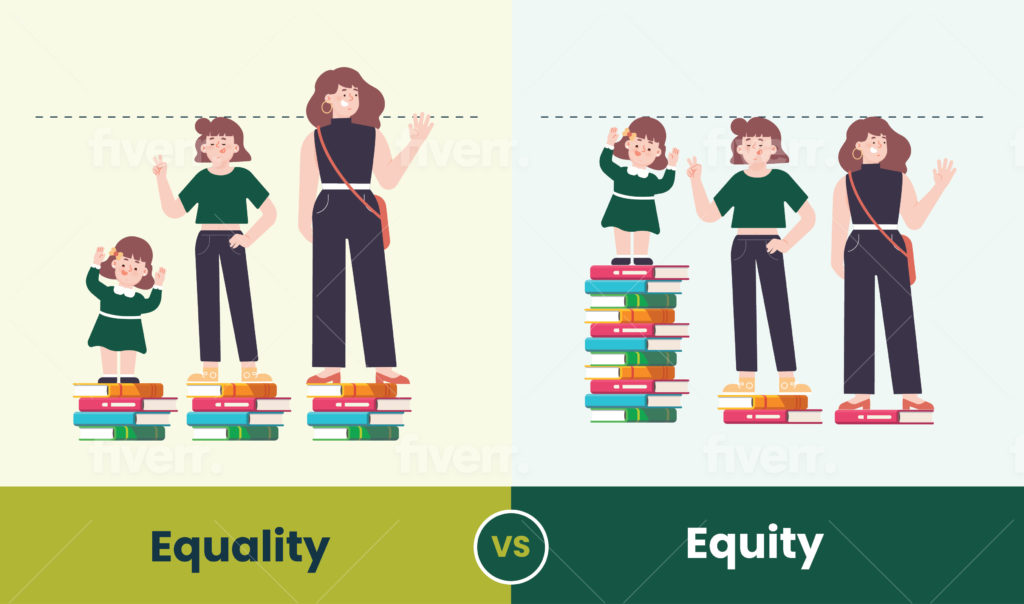
Equity vs Equality in Education and Teaching: Using Tools to Explain the Difference
There are a few tools you can use to explore the concept of equity yourself. Use these tools for your own personal use or use them to teach others.
Tool 1: The Transit Center Equity Dashboard
The Transit Center Equity Dashboard is an interactive tool that lets you visually interact with seven cities across the U.S. — Boston, Chicago, Los Angeles, New York, Philadelphia, San Francisco-Oakland, and Washington D.C. — to see how equitable they are in relation to transportation needs.
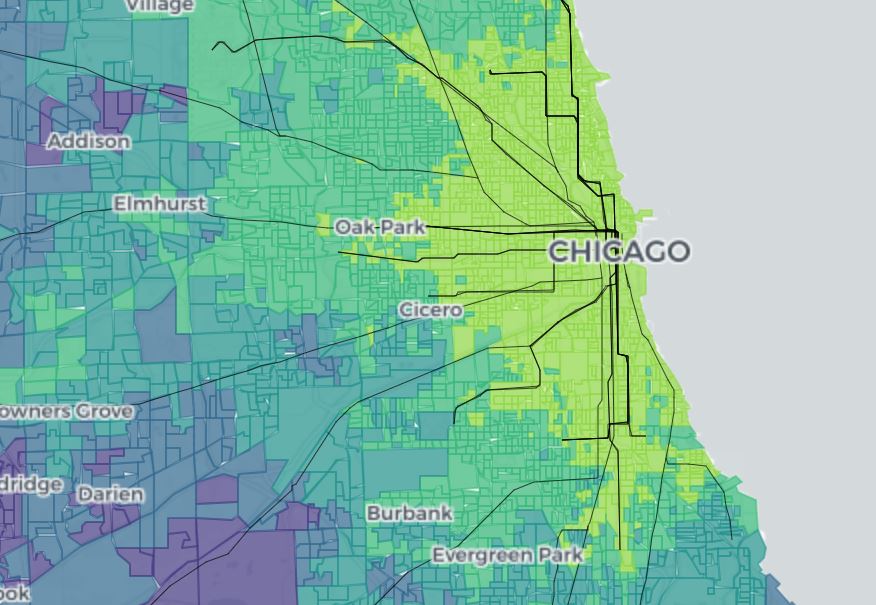
Use the tool to see how well cities connect their marginalized populations with the tools and resources needed to survive. The tool uses several metrics — such as budgets, travel times to grocery stores, and access to healthcare — to measure how successful cities are in meeting equity goals.
Quick Plug: when you open the dashboard and see the cities, click on “Map” to access the tool or click on “Story” to access descriptions and additional information.
Tool 2: The National Risk Index
The National Risk Index is an interactive tool designed to show you hazards throughout the U.S. and how they relate to social vulnerability and resilience.
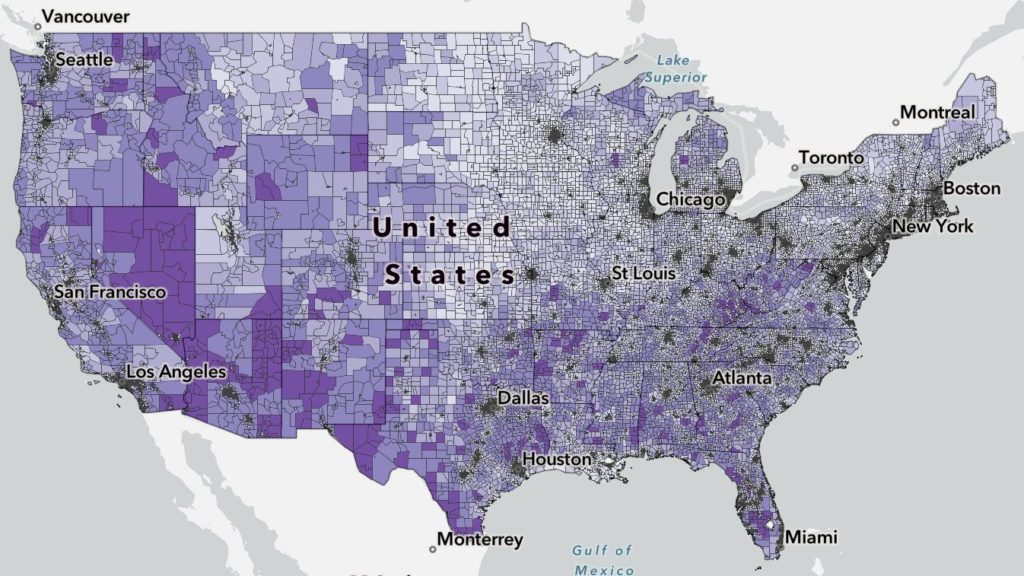
Use the tool to view county-level data for each region of the United States. Explore hazards — such as hurricanes, landslides, and coastal flooding — and see what areas are most at risk from such hazards.
Tool 3: National Equity Atlas – Rent Debt in America
The National Equity Atlas has a host of data tools available, but one equity-based tool really worth exploring is the Rent Debt in America tool.
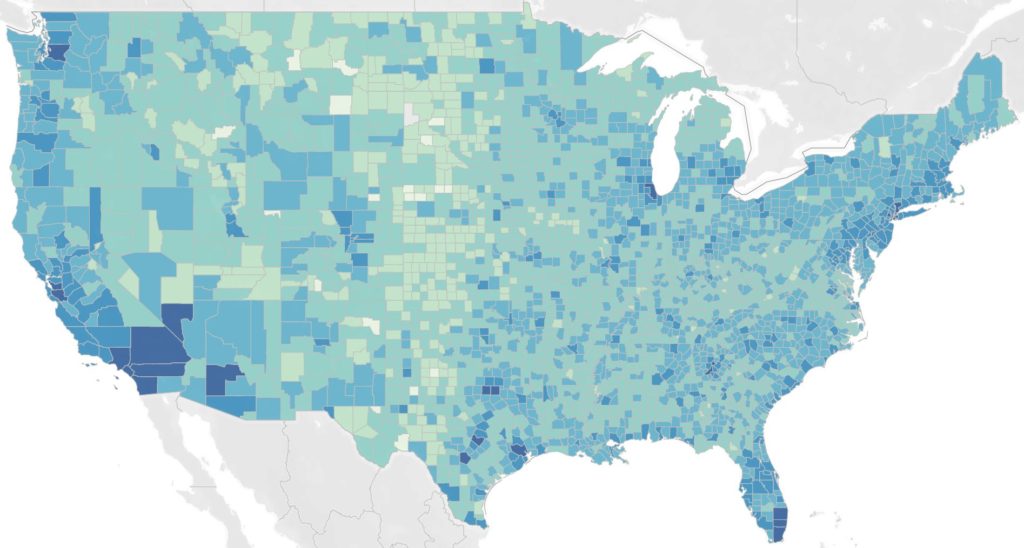
Use the Rent Debt in America tool to visually interact with rent debt across the United States. Select the Debt Dashboard, the Debt Map, or the Relief Map to see how mounting rent debt has quickly turned into a crisis.
Tool 4: Interactive Data Tools
To find even more interactive tools relating to social equity, explore our Interactive Data Tools page.
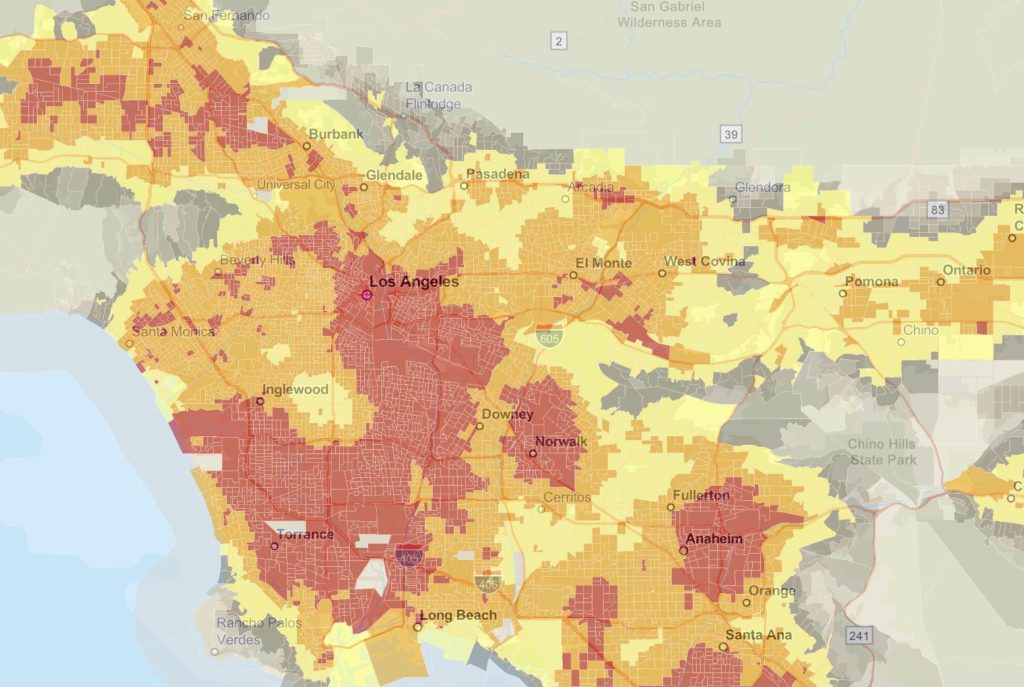
Similar to the other tools listed above, Millennial Cities has collected hundreds of interactive data tools that can be used to learn about equity and social justice throughout the U.S.
Once you open our interactive data tools page, simply click on a subject to view more (i.e. click on social justice to view more equity vs equality tools).
The Main Difference Between Equity and Equality
The main difference between equity and equality is that equity addresses the specific needs of an individual to create fairness whereas equality provides equal treatment to everyone regardless of their baseline starting point.
So, in using the examples outlined above, equity is getting to the root cause of the issue and doing what’s necessary to elevate a group until they’re on a level playing field while equality is treating everyone the same, regardless of that starting point.
BLUF Equality: individuals and groups are given the same resources despite their differences.
BLUF Equity: individuals and groups are treated circumstantially because one group may need more resources to reach an equal outcome.

